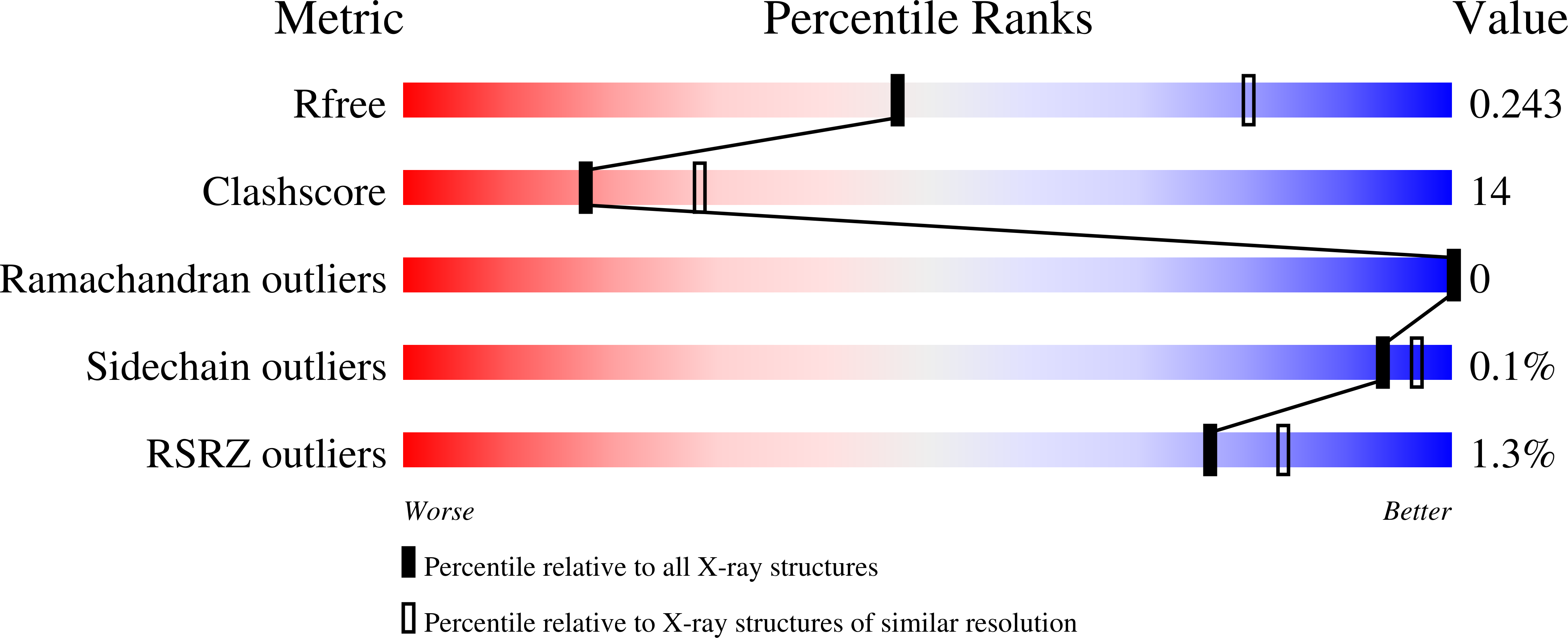Structural Plasticity of the Protein Plug That Traps Newly Packaged Genomes in Podoviridae Virions.
Bhardwaj, A., Sankhala, R.S., Olia, A.S., Brooke, D., Casjens, S.R., Taylor, D.J., Prevelige, P.E., Cingolani, G.(2016) J Biol Chem 291: 215-226
- PubMed: 26574546
- DOI: https://doi.org/10.1074/jbc.M115.696260
- Primary Citation of Related Structures:
4ZKP, 4ZKU, 4ZXQ, 5BU5, 5BU8, 5BVZ - PubMed Abstract:
Bacterial viruses of the P22-like family encode a specialized tail needle essential for genome stabilization after DNA packaging and implicated in Gram-negative cell envelope penetration. The atomic structure of P22 tail needle (gp26) crystallized at acidic pH reveals a slender fiber containing an N-terminal "trimer of hairpins" tip. Although the length and composition of tail needles vary significantly in Podoviridae, unexpectedly, the amino acid sequence of the N-terminal tip is exceptionally conserved in more than 200 genomes of P22-like phages and prophages. In this paper, we used x-ray crystallography and EM to investigate the neutral pH structure of three tail needles from bacteriophage P22, HK620, and Sf6. In all cases, we found that the N-terminal tip is poorly structured, in stark contrast to the compact trimer of hairpins seen in gp26 crystallized at acidic pH. Hydrogen-deuterium exchange mass spectrometry, limited proteolysis, circular dichroism spectroscopy, and gel filtration chromatography revealed that the N-terminal tip is highly dynamic in solution and unlikely to adopt a stable trimeric conformation at physiological pH. This is supported by the cryo-EM reconstruction of P22 mature virion tail, where the density of gp26 N-terminal tip is incompatible with a trimer of hairpins. We propose the tail needle N-terminal tip exists in two conformations: a pre-ejection extended conformation, which seals the portal vertex after genome packaging, and a postejection trimer of hairpins, which forms upon its release from the virion. The conformational plasticity of the tail needle N-terminal tip is built in the amino acid sequence, explaining its extraordinary conservation in nature.
Organizational Affiliation:
From the Department of Biochemistry and Molecular Biology, Thomas Jefferson University, Philadelphia, Pennsylvania 19107.
















